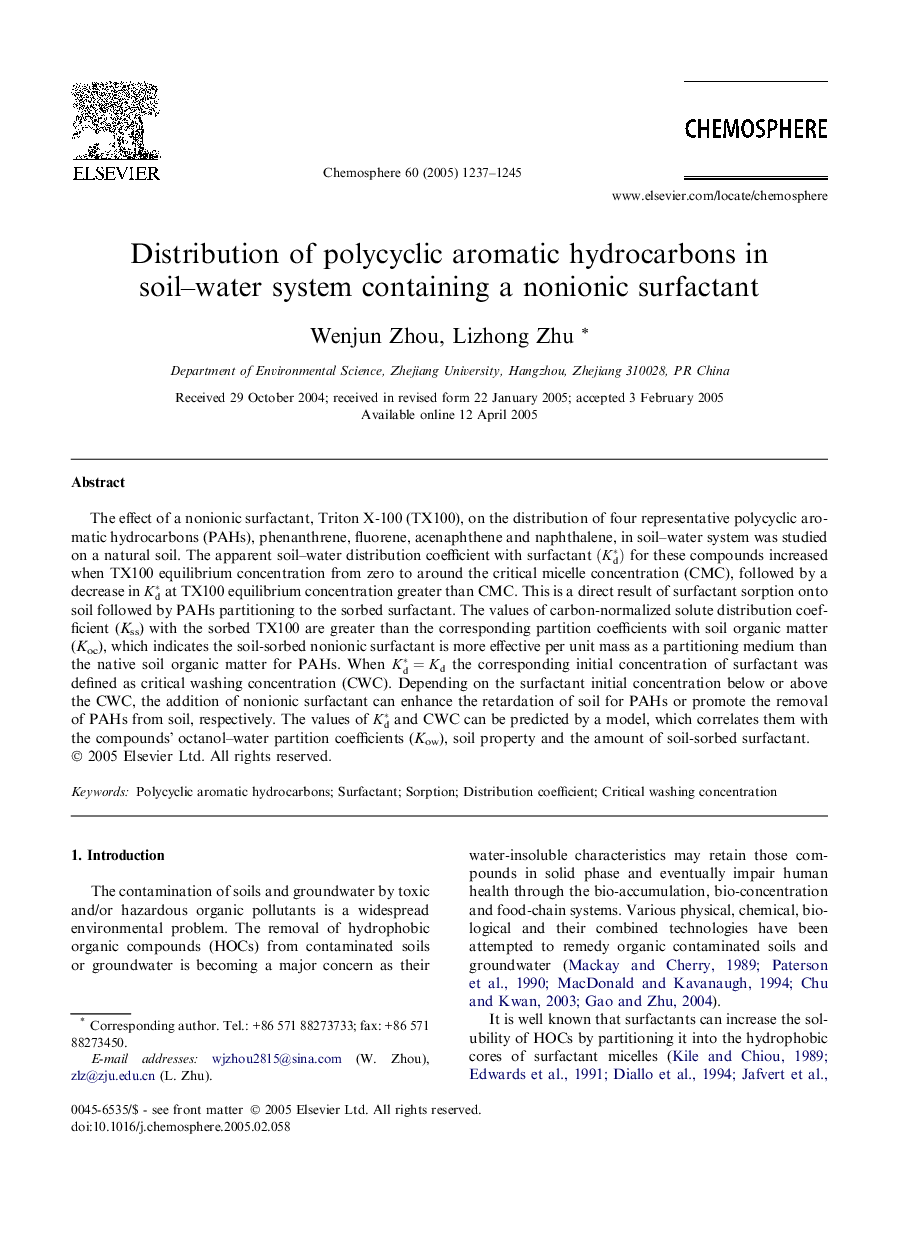| Article ID | Journal | Published Year | Pages | File Type |
|---|---|---|---|---|
| 9451837 | Chemosphere | 2005 | 9 Pages |
Abstract
The effect of a nonionic surfactant, Triton X-100 (TX100), on the distribution of four representative polycyclic aromatic hydrocarbons (PAHs), phenanthrene, fluorene, acenaphthene and naphthalene, in soil-water system was studied on a natural soil. The apparent soil-water distribution coefficient with surfactant (Kdâ) for these compounds increased when TX100 equilibrium concentration from zero to around the critical micelle concentration (CMC), followed by a decrease in Kdâ at TX100 equilibrium concentration greater than CMC. This is a direct result of surfactant sorption onto soil followed by PAHs partitioning to the sorbed surfactant. The values of carbon-normalized solute distribution coefficient (Kss) with the sorbed TX100 are greater than the corresponding partition coefficients with soil organic matter (Koc), which indicates the soil-sorbed nonionic surfactant is more effective per unit mass as a partitioning medium than the native soil organic matter for PAHs. When Kdâ=Kd the corresponding initial concentration of surfactant was defined as critical washing concentration (CWC). Depending on the surfactant initial concentration below or above the CWC, the addition of nonionic surfactant can enhance the retardation of soil for PAHs or promote the removal of PAHs from soil, respectively. The values of Kdâ and CWC can be predicted by a model, which correlates them with the compounds' octanol-water partition coefficients (Kow), soil property and the amount of soil-sorbed surfactant.
Related Topics
Life Sciences
Environmental Science
Environmental Chemistry
Authors
Wenjun Zhou, Lizhong Zhu,
